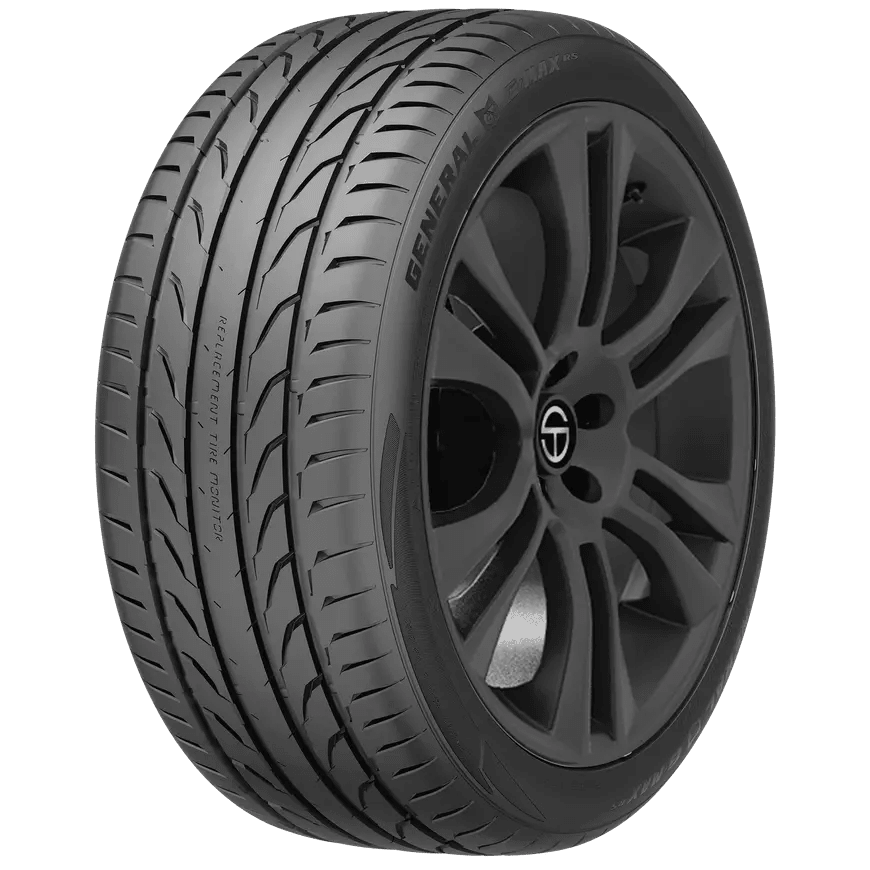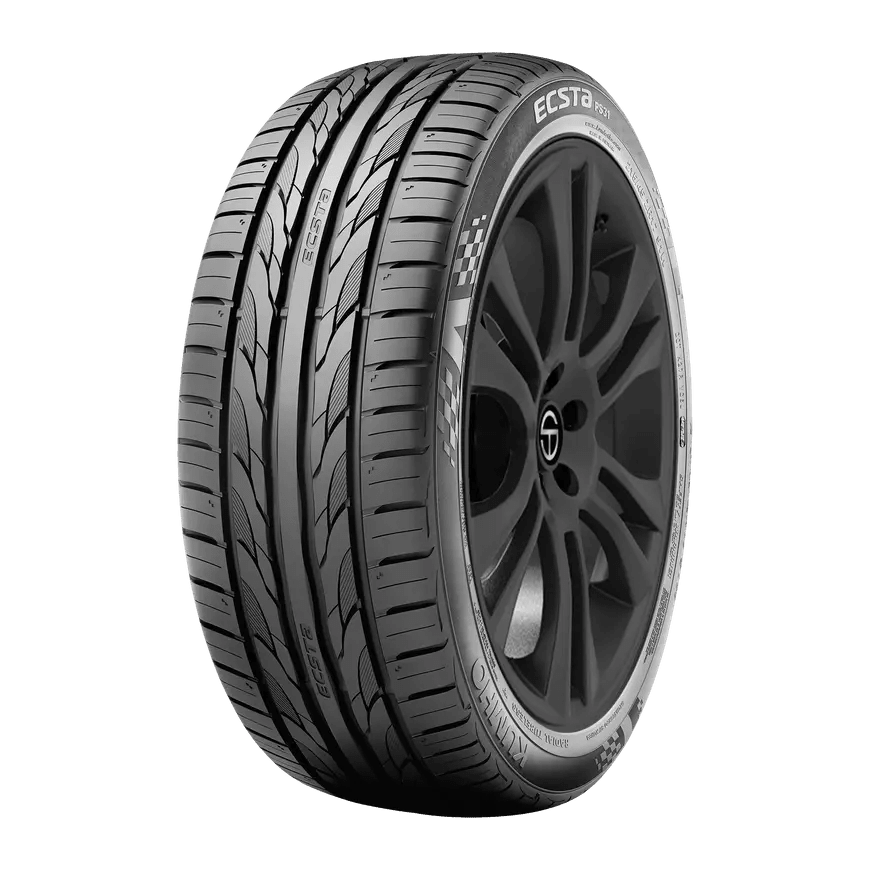Compare
Best price guarantee
Tire replacement coverage
24/7 roadside assistance
Easy returns

If you’ve got a sports sedan, coupe, or crossover and you really want to test the limits of your performance and get the absolute best out of that vehicle’s handling and braking properties, there’s really nothing that can match up to a set of Ultra-high-performance (UHP) summer tires. UHP-summer tires are a specialty tire; they’re designed with a tread pattern and internal construction that gives the tire enhanced stiffness and rigidity for a boost in high-speed stability. That rigidity also has the benefit of summer tires that can keep their tread firmly planted on the road and resist the “tread squirm” and deformation that happens with the inertia and momentum as the vehicle tries to keep tracking forward when you go into a corner or curve at high speed. Their shoulders and sidewalls are also stiffened and reinforced for the same reason, ensuring steering that’s accurate, predictable, and neutral even as you crowd the limit of your vehicle’s handling on corners. Probably the single biggest disadvantage of summer tires is that they use a tread compound that’s softer and more pliable- soft enough to leave an indentation for a few seconds when you press a thumbnail into it, sometimes almost as soft as a pencil eraser. That softness also means a tread formulation that’s sticky enough for glue-like grip on the pavement on hot days, but when the thermometer comes down, the tread compound of these tires will also harden and lose traction (think a flexible running shoe or rubber boot vs a hard rubber hockey puck). If temperatures are below 40-45 degrees F, tire manufacturers advise against using summer tires, meaning when the weather starts getting colder, owners will have to have the tires dismounted and exchanged for all-season tires (then storing the UHP tires until next spring).
Today we’re going to have a look at the General G-Max RS and Kumho Ecsta PS31. The General and the Kumho are both premium high-performance UHP-summer tires that are designed for spirited driving and are a great fit for vehicles like the Audi A6, Nissan GTR, Ford Mustang, Chevrolet Corvette, or BMW 6 Series. The General and Kumho both come with their own sets of strengths and weaknesses, similarities and common ground in their design and performance, along with some pretty significant contrasts.
In the course of this head-to-head matchup, you’ll see us make frequent reference to the SimpleScore of these tires. If you’re not familiar with SimpleScore, it’s the proprietary system that the SimpleTire team has developed to give you an at-a-glance idea of a tire’s capabilities. We look at reviews, specs, and other data points and cook down that information into a numerical score for the categories of handling, traction, and longevity, along with an overall average SimpleScore for any given tire. For the General and the Kumho, the SimpleScore rankings are:
General G-Max RS
- Traction: 8.7
- Handling: 8.5
- Longevity: 8.0
- Overall average SimpleScore: 8.4
Kumho Ecsta PS31
- Traction: 8.5
- Handling: 8.7
- Longevity: 7.6
- Overall average SimpleScore: 8.1
As you can see, the General G-Max RS and Kumho Ecsta PS31 are pretty closely matched with each other in the SimpleScore ratings for each category. As handy as SimpleScore is, though, it’s still the 30,000 foot view that doesn’t get into the details of what a tire has to offer in terms of value and performance. Let’s go ahead and get a closer look with this head-to-head comparison review of the General G-Max RS and Kumho Ecsta PS31:
General G-Max RS tires

When General Tire designed the G-Max RS, their design process was centered around the weight, center of gravity, power, torque, and braking performance of today’s sporty sedans, coupes, and crossovers. The G-Max RS starts with an advanced tread compound designed for dependable traction on wet or dry pavement, great wear properties, and short braking distances. The tread pattern of the G-Max RS is designed with General’s StabiliTred Technology package, a system that puts a bigger, flatter footprint on the pavement for a redesigned contact patch, improved weight distribution, traction, braking, and long, even wear.
A continuous center rib gives the G-Max RS solid straight-line stability and light, immediate steering response and driver feedback. General’s SmartGrip Technology suite is a system of wide, deep circumferential grooves that help to reroute away from the tire’s contact patch to resist hydroplaning on wet days. Wide-angled notches in the tire’s intermediate ribs, along with circumferential grooves and open shoulder slots, are all designed to provide extra biting edges for traction on wet pavement.
Internally, the General G-Max RS incorporates a single-ply polyester casing with high turn-up at the sidewall for extra stiffness, along with a twin steel belt package and two-ply polyamide reinforcement ply for extra stability at high speeds. Like many other General tires, the tread of the G-Max RS has General’s SmartMonitor feature, with the words “Replacement Tire Monitor” molded into the tire’s center rib. As the tire’s tread depth wears down to the legal minimum of 2/32”, the words “Replace Tire” will be revealed, alerting the driver that the tire has worn down to its wear bars. SimpleTire’s price on the General G-Max RS starts at $122.99 per tire.
Kumho Ecsta PS31 tires

There’s a lot to like about the Ecsta PS31 from Kumho. The Kumho Ecsta PS31 starts off from the ground up with a high-tech summer tread compound that features high-dispersible microsilica particles, carbon black, natural rubber, polymers, and a high-grip resin that’s designed for unbeatable traction on wet or dry pavement. Its directional tread pattern includes circumferential and lateral grooves for resistance to hydroplaning, diagonal-sipe microgrooves and Kumho’s innovative 3D Dimple design that helps disperse heat and extend tire life. Road noise is kept to a minimum with a tread pitch that’s randomized and computer tuned to suppress certain frequencies and overtones. The shoulder blocks of the Ecsta PS31 are reinforced for rigidity and resistance to deformation while taking a corner hard, and the sidewall has a sporty checkered-flag motif molded into the rubber. SimpleTire’s price on the Kumho Ecsta PS31 starts at $71.09 per tire.
General G-Max RS vs Kumho Ecsta PS31 tires on traction

With a SimpleScore of 8.7 for the General and 8.5 for the Kumho in the traction category, both of these tires are very capable and compare well to each other. The advanced, next-gen rubber compound of the Kumho is designed for excellent grip as well as good wear properties. The General, though, benefits from its Stabili-Tred and SmartGrip technology packages that include internal construction, tread groove systems, sipes, and tread compound for glue-like adhesion to the pavement. That means improved braking performance, better road manners, and better overall handling (which we’re about to get to). Though both tires have the same tread depth, the Kumho’s directional tread pattern enables it to provide better dry and wet traction than the Kumho. This one’s a close call, but for the sake of more technology, our decision has to go to:
ADVANTAGE: General G-Max RS
General G-Max RS vs Kumho Ecsta PS31 tires on handling
Usually, a tire’s handling is tied in pretty directly to its traction properties, but when we come to the traction category for these two tires, the scores are flipped, with 8.7 for the Kumho and 8.5 for the General. While cornering ability, steering response, road manners, and overall handling properties with the General G-Max RS are sharp and crisp, the directional tread and reinforced shoulder of the Kumho Ecsta PS31 are enough to give it an edge in all those areas. As any vehicle starts to enter a turn or make its way around a corner, the momentum and weight of the vehicle put stresses on the tire’s shoulder and sidewall that can lead to deformation and “tread squirm,” sometimes with the inboard side of the tire leaving the pavement altogether. The reinforced shoulders of the Kumho help resist that deformation to deliver cornering ability that’s accurate and consistent, and the continuous center rib goes a long way towards boosting road manners and steering response. Both tires get multiple speed ratings, but though W is common for both, General also has Y, the highest. It’s clearly a close battle, but our decision:
ADVANTAGE: Kumho Ecsta PS31
General G-Max RS vs Kumho Ecsta PS31 tires on longevity
When you’re talking about longevity for summer tires or UHP tires, the term starts to be fairly relative. After all, these are seasonal tires that aren’t used year-round, and UHP and summer tires hardly ever come from the factory with limited manufacturer’s tread life warranty coverage. In the longevity category, the Kumho registers a SimpleScore of 7.6 vs 8.0 for the General. In an instance like this, we’re generally going to defer to the customer reviews to get a fix on that SimpleScore number, and reviews point to the General having better wear properties. Bear in mind that not many people are buying tires like these for their longevity to begin with, though. Our decision:
ADVANTAGE: General G-Max RS
When to use each
First off, we should probably talk about when not to use these tires. If you’re driving a nice sedate, luxurious Buick crossover or an everyday kid-hauler and grocery-getter like a Dodge minivan or a Toyota Camry, these might not be the right tires for you. They’re only usable in warmer weather and are not suitable for colder temperatures, and they will need to be dismounted, stored, and swapped for all-season tires when the thermometer starts to dip below 40-45 degrees F. Summer tires and UHP tires are not known for a forgiving ride or low noise (although the Kumho might be the exception), and long, even treadwear isn’t a strong point either. In other words, for a daily driver, road trip, or commuter duties, high-performance summer tires like the General G-Max RS and Kumho Ecsta PS31 probably won’t be the best choice.
If, on the other hand, you love white-knuckle, spirited driving and love to test the limits of your car’s performance on hilly roads or freeway onramps, the General G-Max RS and Kumho Ecsta PS31 could both be just the kind of tire you’re looking for. Both tires are responsive, capable, and can easily hang in with just about the hardest driving you can throw their way. If you’re a driver who likes pulse-quickening performance and an exhilarating experience behind the wheel, both tires are great options; Kumho scores better in handling and General has the higher speed rating. On the other hand, you’ll find the General tire to be the one that lasts longer.
Which one should you choose?

In most of our comparison reviews at SimpleTire, we end up with one tire that’s clearly out in front of the other in SimpleScore numbers and in overall performance and value. That’s not really the case here, though. The Kumho Ecsta PS31 and General G-Max RS are tires that both deliver excellence and are both packed with premium-quality innovations and design features. SimpleScore numbers are tight for both tires, and both tires are also pretty affordable and reasonably priced. Speaking of, let’s look at those prices: $71.09 per tire for the Kumho vs $122.99 per tire for the General. So let’s just break it down this way: if you can afford the General G-Max RS, that’s the tire you should opt for. If you want to save a bit (more than a bit, actually) of money on a set of tires, the Kumho Ecsta PS31 is the tire for you. We’re confident in saying that you wouldn’t be making a bad call either way.
Still not sure which tire to buy? Fortunately, SimpleTire is here to help, as our helpful agents will be more than happy to assist you in selecting the right tire for your ride and budget.
Ready to find the perfect tires?
Search By